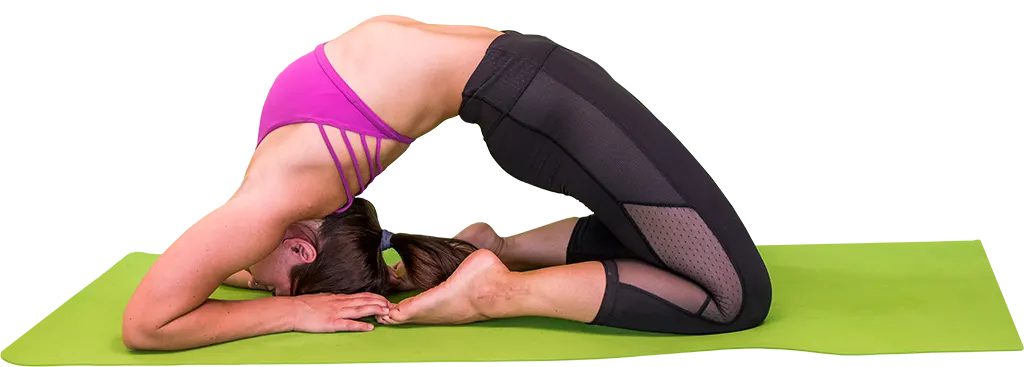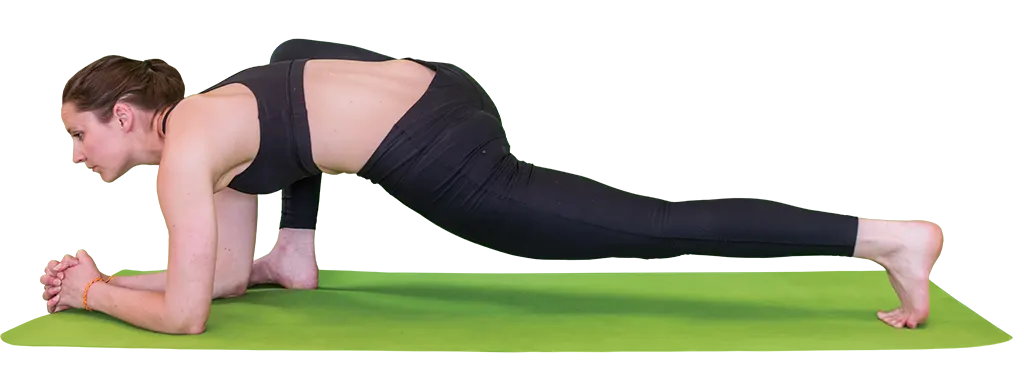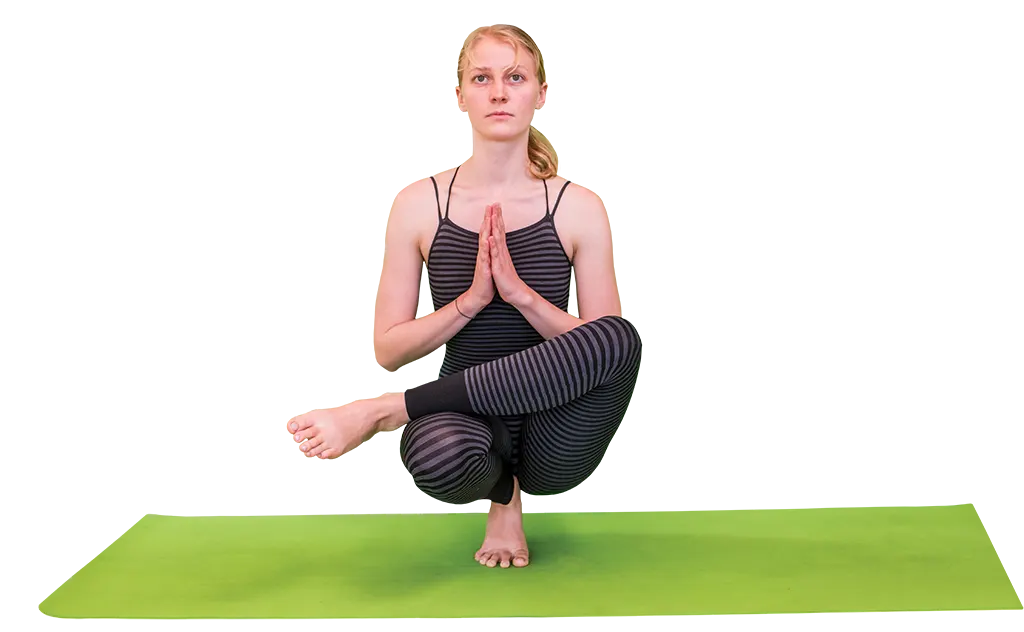Table of content
Preparation
Sit in Vajrasana, both palms on your knees. Keep your neck and spine straight. Adjust knees, calf muscles, and ankles to avoid leg pain. Inhale, exhale, and relax.
Getting into position
Method 1 Come into Supta Vajrasana (Sleeping Thunderbolt), resting the crown of the head on the floor. Bring your palms under the shoulders (fingers facing the feet). Exhale. Inhaling, lift the torso upward (arching the back and lifting head off the floor), and lower the elbows (entire forearms on the floor). Hold for a few moments to allow the body to adjust. Then, adjust the arms to reach your toes. Hold for a few moments to allow the body to adjust. Inhale. Exhaling, arch farther. Hold with normal breathing for as long as comfortable.
Method 2 Come up to a kneeling position. Exhale. Inhaling, lengthen the chest, raise your arms overhead, stretch the thighs, push your hips forward, and look up. Exhaling, arch your upper back, lean backward, drop your head toward the feet, and lower your hands to your feet, resting your palms on your toes (arms parallel to each other). Hold for a few moments to allow the body to adjust. Inhale. Exhaling, arch farther, lowering your head to the floor. Hold with normal breathing for as long as comfortable.
Coming out of position
Method 1 Slightly relax the body. Exhale. Inhaling, lift your elbows up slightly, moving the hands backward away from the feet. Exhaling, lift the head up slightly (to create space), and carefully lower your torso down into Supta Vajrasana. Hold for a few moments to allow the body to adjust. Then, sit back into Vajrasana. Inhale, exhale, and relax.
Method 2 Slightly relax the body. Exhale. Inhaling, lift your elbows up slightly, moving the hands backwards away from the feet. Then, lift the head up slightly, activate the thigh, back, and core muscles to bring your torso back upright. Use your hands on the lower back for support if needed while coming up (bringing them in one at a time). Sit back into Vajrasana. Inhale, exhale, and relax.



